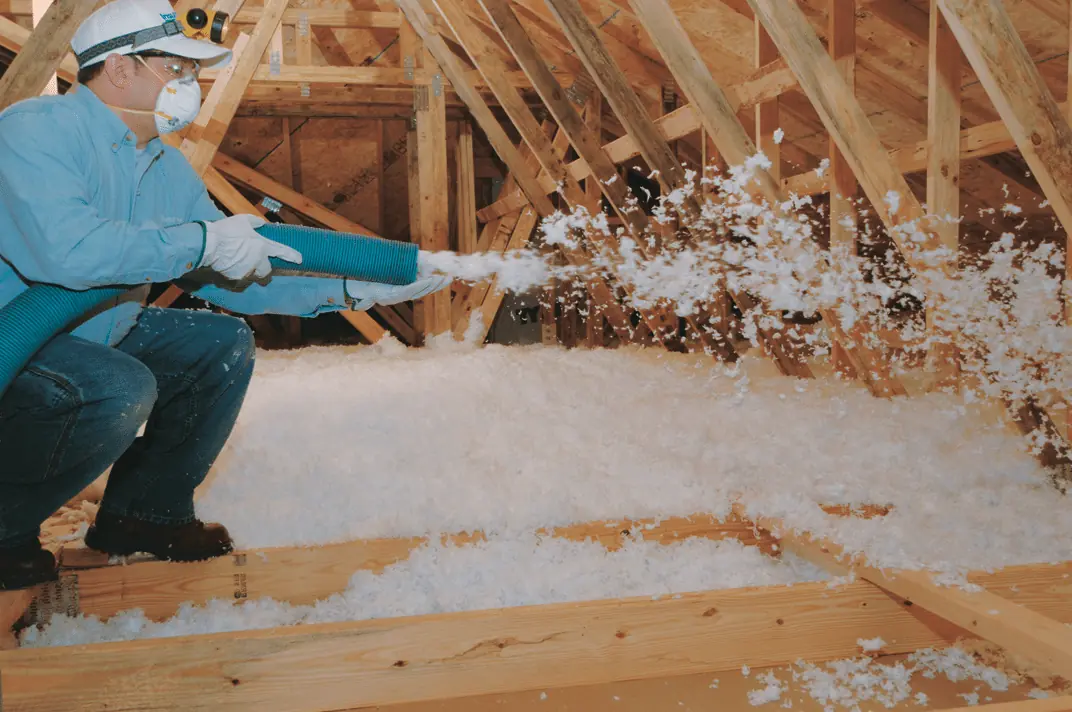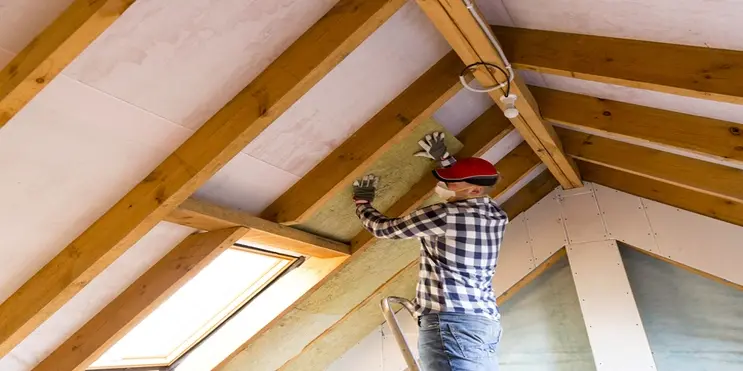The Ultimate Overview to Choosing the Right Attic Insulation DFW Services
The Ultimate Overview to Choosing the Right Attic Insulation DFW Services
Blog Article
Discover the Different Kinds of Attic Insulation and Their One-of-a-kind Advantages for Your Home's Power Effectiveness

Fiberglass Insulation
Fiberglass insulation is among one of the most frequently used products for attic room insulation due to its superb thermal efficiency and cost-effectiveness. Made up of tiny glass fibers, this product efficiently catches air, producing an insulating obstacle that helps preserve constant indoor temperature levels. Its high R-value per inch makes it particularly effective at standing up to warm transfer, which is vital for energy conservation in homes.
Setup of fiberglass insulation is relatively uncomplicated, frequently available in batts or loose-fill types, fitting various attic arrangements. Furthermore, it is non-combustible and immune to moisture, reducing the danger of mold and mildew development. This longevity adds to its longevity, making fiberglass a practical long-lasting financial investment for house owners.
Moreover, fiberglass insulation is typically produced from recycled products, which boosts its eco-friendliness. The product can also add to soundproofing, lessening noise transfer between spaces. While it is vital to use safety gear throughout installation to prevent irritability from the fibers, the total advantages of fiberglass insulation, including energy cost savings and environmental considerations, make it a preferred choice for enhancing attic room efficiency and promoting a comfortable living environment.
Spray Foam Insulation
Spray foam insulation is a highly effective alternative for attic room insulation, recognized for its premium air sealing and thermal efficiency. This ingenious insulation material is made up of a mixture of isocyanate and polyol resin, which, when integrated, expands rapidly to fill up voids and cavities in the attic room space. Its capacity to comply with different surfaces guarantees a constant barrier versus air leaks, significantly minimizing warm loss throughout chillier months and warmth gain during warmer seasons.
Among the crucial benefits of spray foam insulation is its high R-value per inch, which implies it provides superb thermal resistance in a reasonably thin application. This is specifically beneficial in attic rooms where room is commonly restricted. Additionally, spray foam can assist lessen dampness buildup, lowering the danger of mold and mildew and mildew development, which can be detrimental to both the structure and indoor air high quality.
While the preliminary cost of spray foam insulation might be greater than typical choices, its lasting energy savings, coupled with boosted convenience and enhanced home value, make it a worthwhile investment for homeowners seeking boosted energy performance. Attic Insulation DFW. In general, spray foam insulation stands out as an efficient option for enhancing attic insulation
Cellulose Insulation

Cellulose insulation is a preferred option for attic insulation, largely made up of recycled paper items treated with fire resistants. This eco-friendly option is known for its superb thermal efficiency, successfully minimizing warm transfer in both summer and winter season months. The dense structure of cellulose allows it to fill up gaps and spaces in attic room areas, offering a smooth barrier against air leaks.
One of the substantial benefits of cellulose insulation is its capacity to withstand mold and mildew and bugs, owing to the fire resistant therapies utilized throughout manufacturing. Furthermore, it flaunts a high R-value per inch, which translates right into exceptional power effectiveness. Home owners can expect reduced heating and cooling prices as a result of improved insulation.
Setup is usually accomplished with blowing loosened cellulose into the desired area, permitting a reliable and fast process. This technique likewise decreases disruption to the existing structure. In addition, cellulose directory insulation has a relatively low environmental effect, as its production process utilizes recycled products, adding to sustainable building methods.
Rock Wool Insulation
Among the various options for attic insulation, rock wool, likewise referred to as mineral woollen, attracts attention because of its remarkable thermal and acoustic performance. Made from recycled or natural products, rock woollen is developed by thawing rock and rotating it right into fibers, resulting in a product that uses superb insulation homes.
One of the significant benefits of rock wool insulation is its high R-value, which suggests its efficiency in withstanding heat circulation. This particular not just improves power effectiveness however also contributes to keeping a comfy interior temperature year-round. Additionally, rock woollen is naturally fire-resistant, making it a safer option for homes as it can hold up against heats without melting or launching harmful fumes.
Moreover, rock wool insulation stands out in soundproofing abilities, successfully reducing sound transmission between areas and from outdoors sources. On the whole, rock wool insulation offers a detailed remedy for enhancing power efficiency, security, and convenience in property settings.
Radiant Barrier Insulation
Radiant obstacle insulation works as an effective remedy for reducing heat transfer in attic rooms, particularly in warmer climates. This kind of insulation works by mirroring convected heat far from living spaces, consequently minimizing the quantity of warmth that goes into a home during heat - Attic Insulation DFW. Normally composed of an extremely reflective material, such as aluminum useful content foil, radiant barriers are mounted in attic rooms, facing the roofing, where they can intercept inbound warm from the sun
The key advantage of glowing barrier insulation is its capability to lower air conditioning costs. By showing heat instead than absorbing it, glowing barriers can aid keep a much more stable indoor temperature level, reducing the workload on cooling systems. This efficiency translates into lower energy bills and raised convenience for property owners.
In addition to energy financial savings, glowing barriers can also add to boosted indoor air quality. By decreasing heat buildup, they assist lessen humidity levels, which can prevent mold growth and enhance total air flow. When set up appropriately, radiant barrier insulation can be a vital addition to any type of energy-efficient home, making it a deserving consideration for homeowners looking to enhance their attic room insulation method.
Conclusion
In verdict, recognizing the different kinds of attic room insulation-- fiberglass, spray foam, cellulose, rock woollen, and radiant barriers-- makes it possible for property owners to make enlightened choices relating to power efficiency. By choosing the appropriate insulation material, substantial decreases in power expenses can be attained, along with enhancements in indoor convenience.

In conclusion, recognizing the numerous kinds of reference attic insulation-- fiberglass, spray foam, cellulose, rock woollen, and radiant obstacles-- enables house owners to make enlightened choices concerning energy efficiency.
Report this page